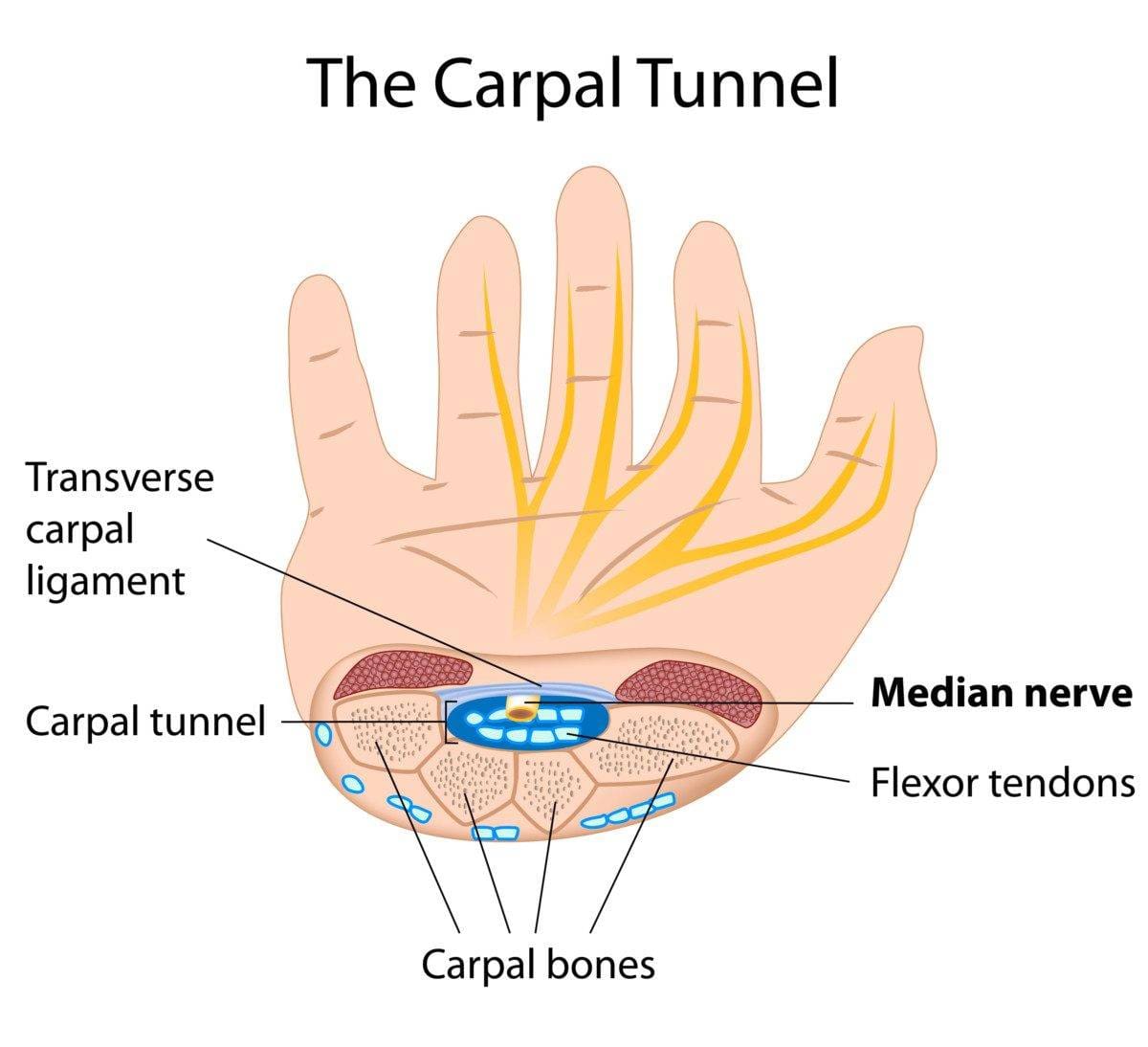By Megan White, RMT
4 Minute Read
In my experience, not many people know they should take care of their forearms. Before becoming a massage therapist, I did not think about the muscles in my forearms when it came to my self-care. How many people do you know that workout who actually take the time to stretch their forearms? Very few, I am guessing. Now, think about those of us who use their arms and hands for a living that don’t stretch them at all! This can lead to a very common condition, that almost everyone has heard of, called carpal tunnel syndrome.
So what is carpal tunnel syndrome? Most people know that it is a condition where people feel pain, numbness, tingling, and even weakness in their wrists and hands. Many of us associate this condition with those who do a lot of typing. This is true, however, it can affect people with many different jobs. Getting to the nitty-gritty of carpal tunnel syndrome – it is compression of one of the three major nerves that run down the arm into the palm, called the median nerve. As this nerve passes a large ligament, called the transverse carpal ligament, it can often be compressed through this opening, leading to symptoms in the palm, thumb, and first three fingers.

It is most common for people to develop carpal tunnel from the inflammation of the nerve or inflammation of the tendons around the nerve. This is done by overusing the forearm flexor muscles. These muscles are the ones that allow you to curl your wrists and fingers. The most common professions that are prone to carpal tunnel syndrome are office jobs that involve a lot of typing or mouse use, massage therapy, and those who use vibrating tools, such as dentists, dental hygienists, and construction workers.

With the same as any other stretching of muscles, warming them up always gives better results and less discomfort. You can heat the area using a heating pad or a warm shower, if that is not available you can make a fist and curl your wrist towards you and squeeze for 10 seconds then immediately stretch.
Here is how you stretch your forearm flexors:
Keep your elbow straight and palm up, extend your wrist, and use your opposite hand to pull your fingers back towards you. Hold this stretch for 30 seconds and repeat on the opposite side.

Deep tissue massage, trigger point release, and stretching is how many massage therapists treat the forearms. While these techniques can be uncomfortable, they are necessary for keeping the forearms from creating a carpal tunnel syndrome to plague your daily life.
If you already suffer from mild to moderate carpal tunnel there is still time to help resolve it without the need for surgery. Getting them treated by massage and stretching them on your own at home will likely help relieve the symptoms. Using wrist braces, especially, when you sleep can also keep the carpal tunnel from getting worse when you need to use your forearms or in sleep when you don’t have control of the positions the wrists can find themselves in.
Keep those wrists, hands, and forearms in mind when you are working. Keeping them stretched as to reduce the amount of inflammation happening will keep you happy and pain-free in the future. Happy stretching!


